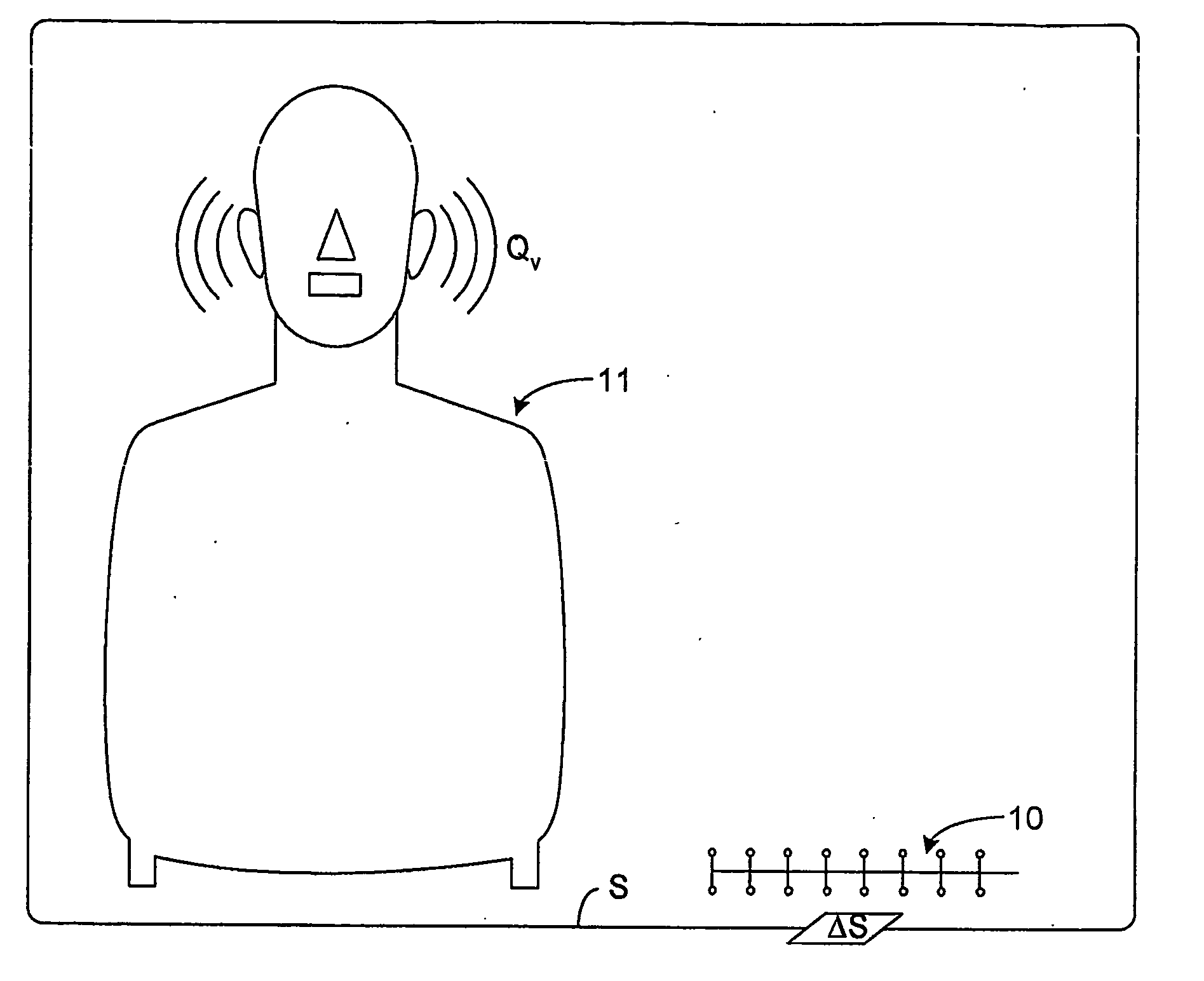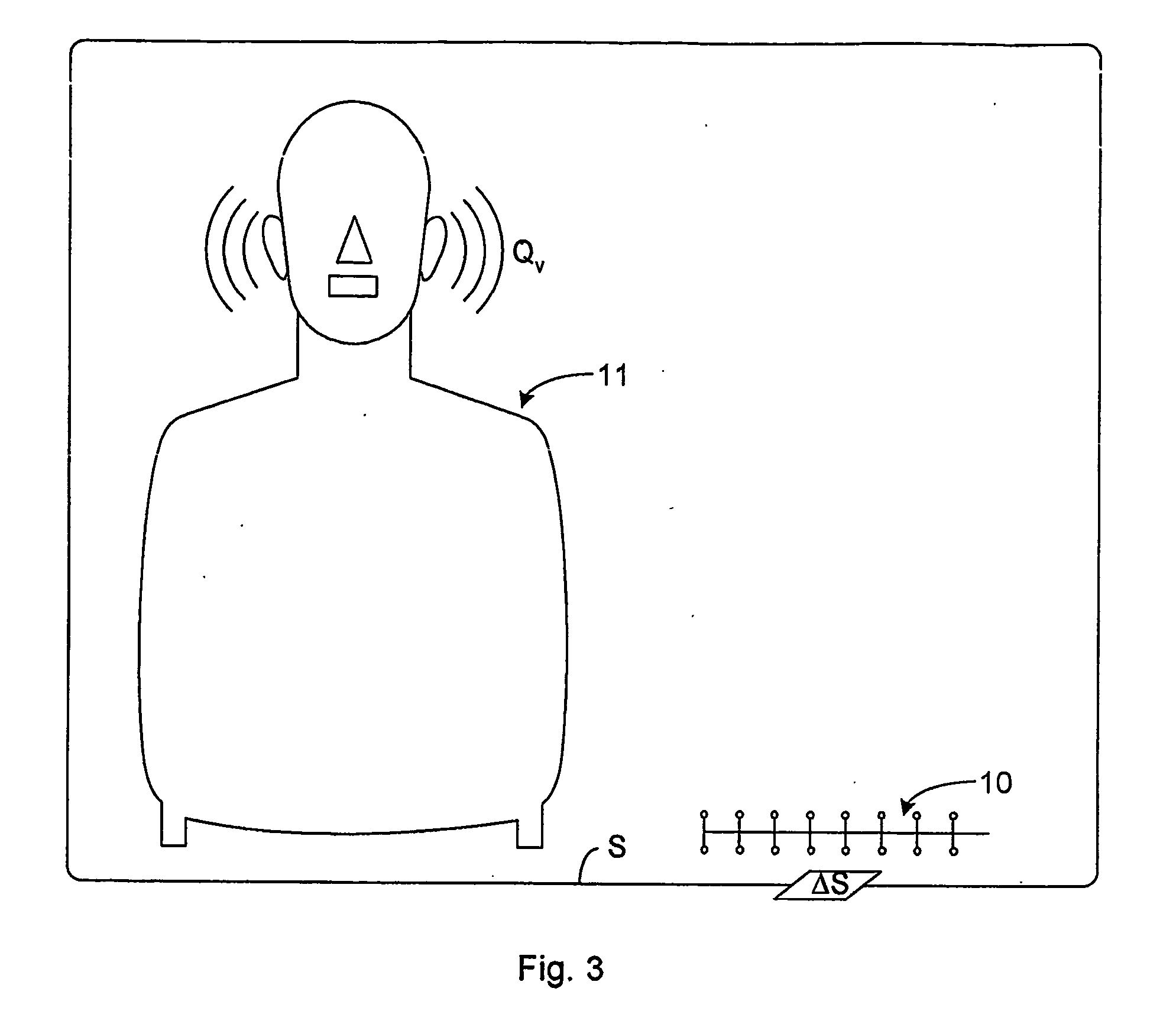Method of determining the sound pressure resulting from a surface element of a sound emitting device
a surface element and sound pressure technology, applied in seismology, geological measurements, weighing apparatuses, etc., can solve the problems of complex identification of noise sources and transmission paths, noise can seriously jeopardize the comfort of people, mechanical structures, and noise can seriously jeopardize the health of people, so as to avoid rigid surface elements
- Summary
- Abstract
- Description
- Claims
- Application Information
AI Technical Summary
Benefits of technology
Problems solved by technology
Method used
Image
Examples
Embodiment Construction
[0025] The measurement set-up used in the invention is as follows.
[0026] In FIGS. 1 and 2 a three-dimensional array 10 of a plurality of microphones M is shown. The term “microphone” is here used as the generally accepted term for a transducer that generates an (electrical) output signal in response to pressure variations in the fluid (air, water etc.) that surrounds the transducer. The array comprises two identical, parallel layers of microphones M spaced a vertical distance dv apart. In each layer the microphones are distributed in two sets of parallel rows forming a square grid with the rows spaced horizontal distances dhx and dhy, respectively, apart. In the preferred embodiment shown, the vertical distance dv and the horizontal distances dhx and dhy are identical, whereby the microphones are uniformly distributed and form a cubic lattice. A non-periodic or non-uniform, such as pseudo-random, distribution of the microphones can also be used. The microphones have well-defined, p...
PUM
 Login to View More
Login to View More Abstract
Description
Claims
Application Information
 Login to View More
Login to View More - R&D
- Intellectual Property
- Life Sciences
- Materials
- Tech Scout
- Unparalleled Data Quality
- Higher Quality Content
- 60% Fewer Hallucinations
Browse by: Latest US Patents, China's latest patents, Technical Efficacy Thesaurus, Application Domain, Technology Topic, Popular Technical Reports.
© 2025 PatSnap. All rights reserved.Legal|Privacy policy|Modern Slavery Act Transparency Statement|Sitemap|About US| Contact US: help@patsnap.com



